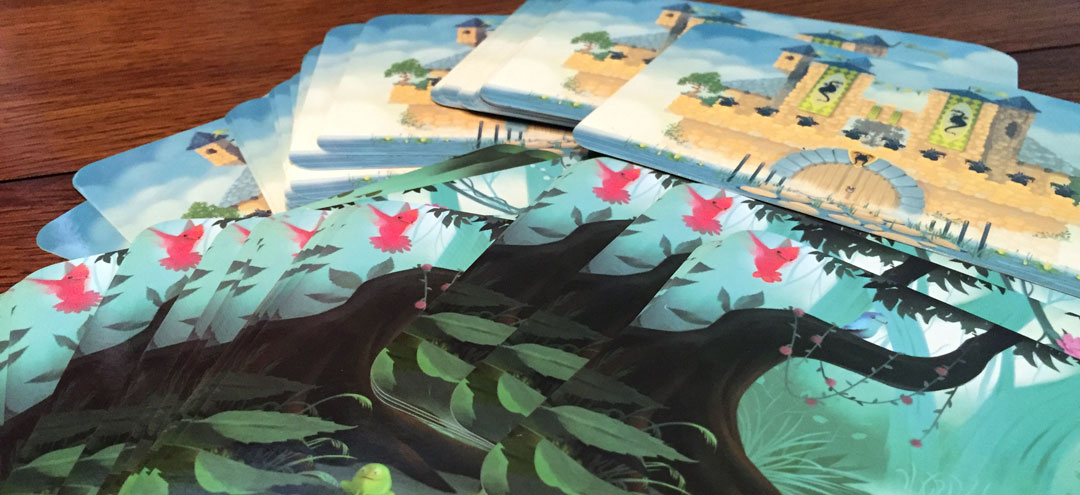 One reality of children is that you will increase the amount of time you spend at the doctor’s office. One saving grace of these visits is getting to show my kids my favorite magazine when I was a kid, Highlights. Two of my favorite features of the magazine were the spot the differences and the “What’s Wrong?” drawing on the back cover. I enjoyed searching the images to find those few things out-of-place.
One reality of children is that you will increase the amount of time you spend at the doctor’s office. One saving grace of these visits is getting to show my kids my favorite magazine when I was a kid, Highlights. Two of my favorite features of the magazine were the spot the differences and the “What’s Wrong?” drawing on the back cover. I enjoyed searching the images to find those few things out-of-place.
Think that is why I was interesting in trying out Difference from Gigamic. Difference takes the spot the difference experience to your gaming table as you try to find the two differences between the reference card in the center of the table and your own. Can this traditional solo activity become a competitive affair; let’s get to the review to find out.
Difference is a spot the difference game for 2-6 players to complete in about 20 minutes. In my experience the game plays best with 2 or 3 players.
Game Overview:
In Difference, you are trying to get through the stack of cards that are given to you at the start of the game. In order to do this, you must spot the two differences between your card and the one on the table. If you are the first to do so, your card then becomes the reference card for the next round. This will continue until one player is out of cards and the game is over.
Game Components:
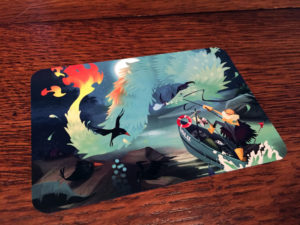
I wasn’t the biggest fan of tin boxes when I first got into board games, but I have started to like them more. Difference’s tin box works well and keeps the fifty cards contained even when transporting from place to place.
The real star of the components is the artwork on the cards. They are simply stunning. There are four unique illustrations depicting a circus, castle, lake, or dragon scene. They are all vibrant and interesting to look at even if they didn’t have the added spot the difference element. I also like that the cards are large enough that the art isn’t compressed due to the cards size.
How to Play:
Players must first decide which of the four illustrations they want to use this game. One of the cards is placed in the center as the reference card, with the rest of the cards distributed face down based on the number of players. To start, players will flip over their first card and try to be the first to spot the two differences between the two cards. If they do, they place their card on top of the current reference card and they flip over a new card from their deck. Players will continue to spot the differences until one player has placed all their cards on the pile and they win the game.
There is an advanced version of the game if you want to try something different. There no longer is a single reference card while you are playing. In order to place a card you must find all of the differences to each adjacent card in the spot they want to put the card. This isn’t difficult at the start, but because you can’t have more than 5 cards per row and column you will be forced to find multiple differences later in the game.
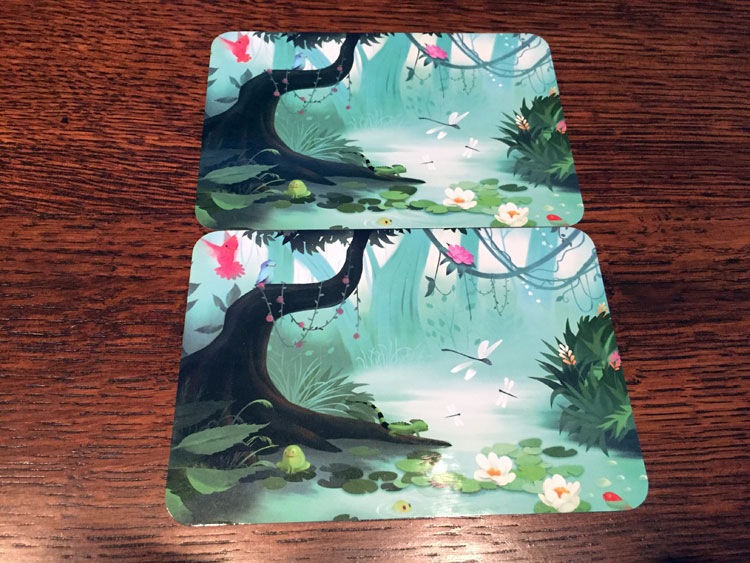
Game Experience:
One of the things I didn’t expect while playing was the level of difficulty my children and I found. The illustrations are amazing just as art, but it’s the inclusion of so many small details that allow them to work in the game. There are only a few of those obvious differences that you find in traditional spot the differences pictures. The amount of detail they are able to cram into these illustrations makes each find a challenge. They do have the locations split into two easy and two difficult to allow for younger kids to play. From my experience there is a clear difficulty change between the two sets.
Each scene is unique in its color scheme as well as location. This allows for the game to seem fresh when you switch to another card. I’m glad they put in four different options you could choose, but I would have liked a few more. There is a point after you have played enough at one location that you start to remember the differences. This happened with me because my kids only enjoyed the easier illustrations.
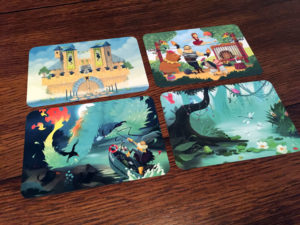
I first attempted to play the game with my two kids and something quickly became apparent. You cannot play this game without looking at the illustration right side up. Looking at it from an odd angle starts as annoyance but eventually leads not enjoying the game at all. I quickly found myself standing behind my kids trying to find the differences. It is for this reason I don’t recommend the game be played with more than three people. It is just too difficult to get everyone looking at the illustration from the same angle around a table.
I wasn’t sure how the game would work as a competitive game, but it does. The pressure element of trying to find the difference does start to mount as you get later into a round. The kids definitely reacted to it. This added a nice bit of excitement to the game, but that started to fade. With only having one image for the entire game, it doesn’t take long for the searching excitement to run its course. After we were about half way through the game, both my kids and I were ready to do something else. While it was enjoyable for a little while, the game is best enjoyed in shorter spurts and not the full set of cards for players listed in the rules manual.
The advanced rules do add a memory element to the game by forcing you to find all the differences between the cards in the cardinal directions from a spot on the board. This doesn’t start to become a real challenge until you are forced to take spots that require more than one difference to find. I found this to be more engaging than the normal rules, but it does add to the difficulty. After attempting this with my seven year old, it is clear that only older kids and adults would enjoy this rules variant.
Final Thoughts:
At its core, Difference is a great spot the difference experience. The illustrations are vibrant and the amount of detail makes searching through them a challenge. As a competitive game, differences works in both regular and advanced rules. You can feel the pressure as you are looking to the differences between the cards, but that experience isn’t enough to keep you engaged for a full game. After flipping through a few cards, you’re ready for the experience to be over. The gameplay just isn’t varied enough to hold kid or adult interest through the full game. Even with this shortfall, Difference is a fun experience while it lasts.
If you’d like to pick up a copy of Difference, you can get it for about $10.
Final Score: 2.5 Stars – Works as a short activity but ultimately the gameplay starts to lose its appeal as you progress through the game.
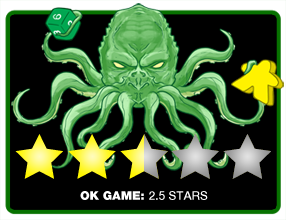 Hits:
Hits:
• Amazing illustrations
• Differences are not easy to spot
Misses:
• Doesn’t hold your interest through
• Can only view from one angle








